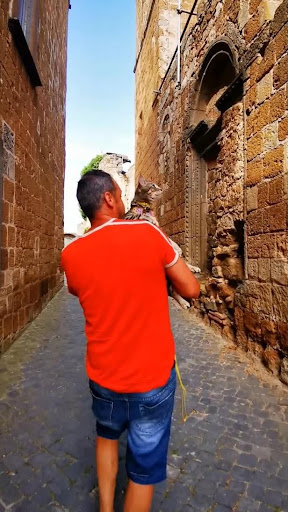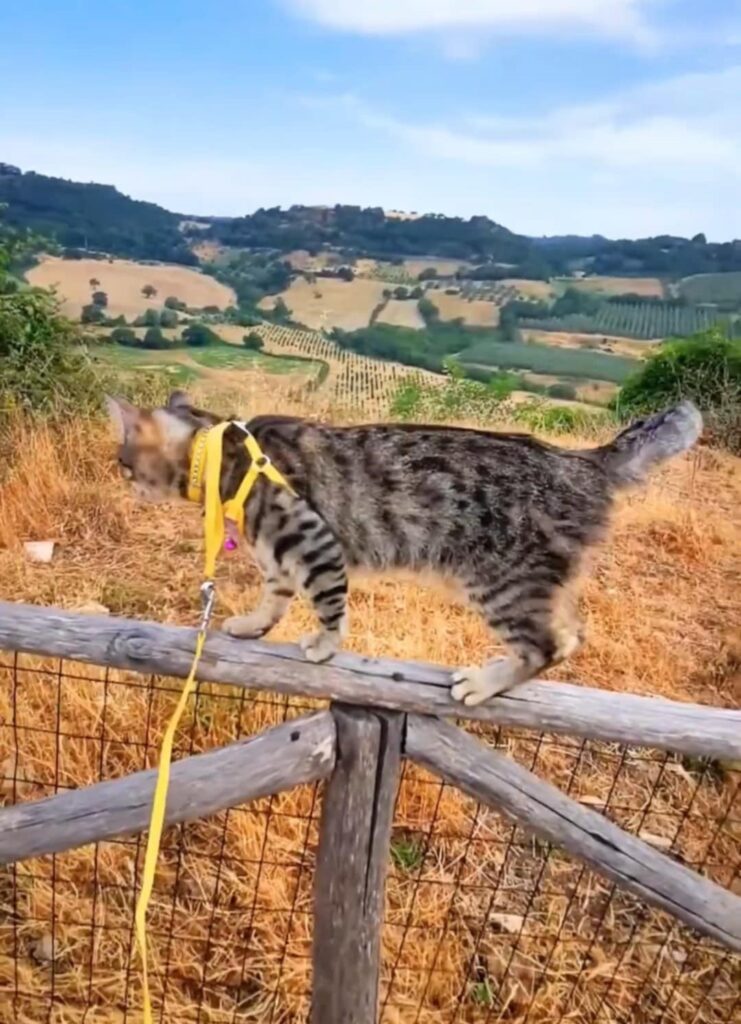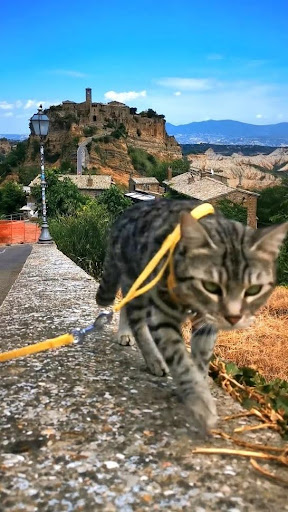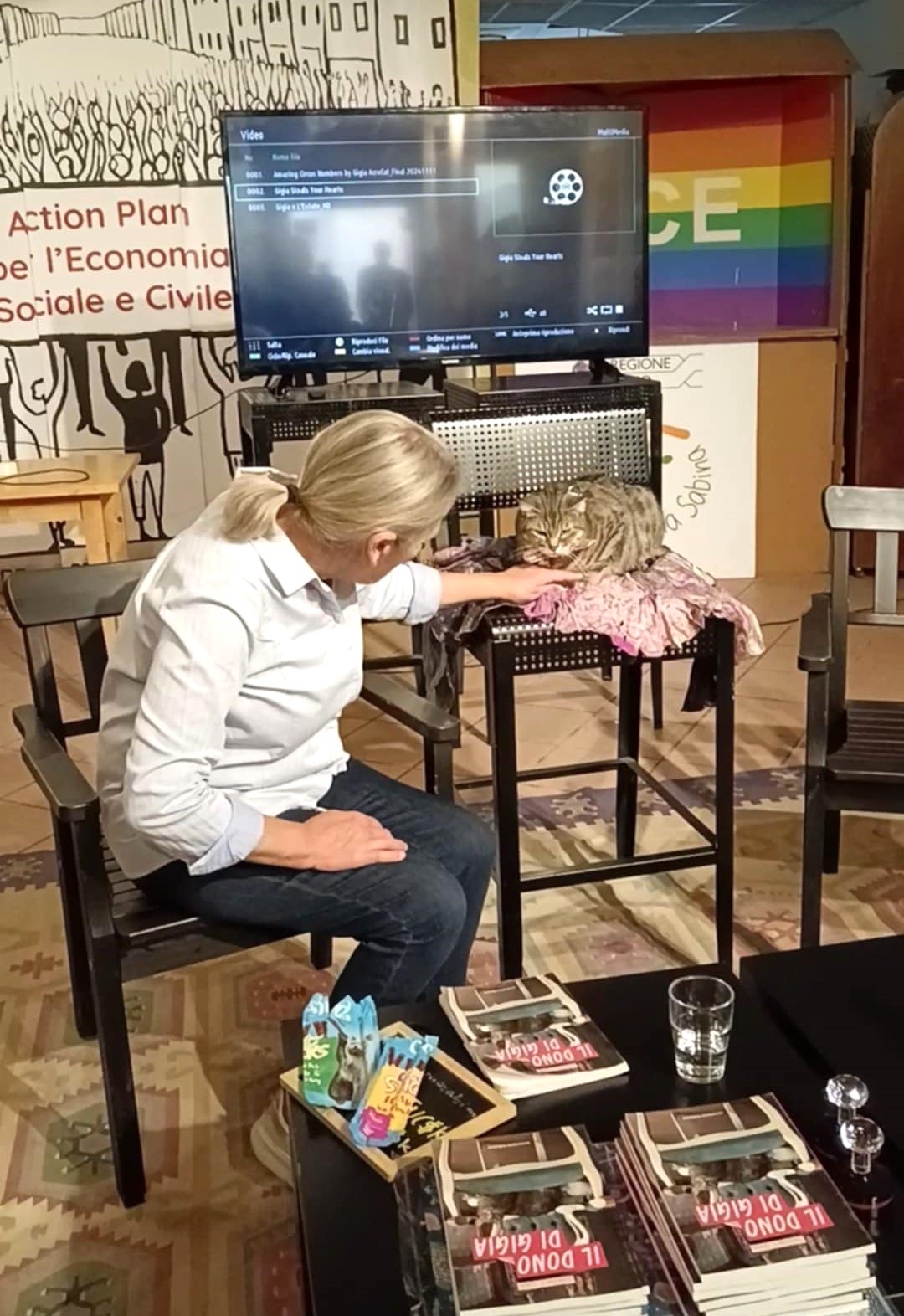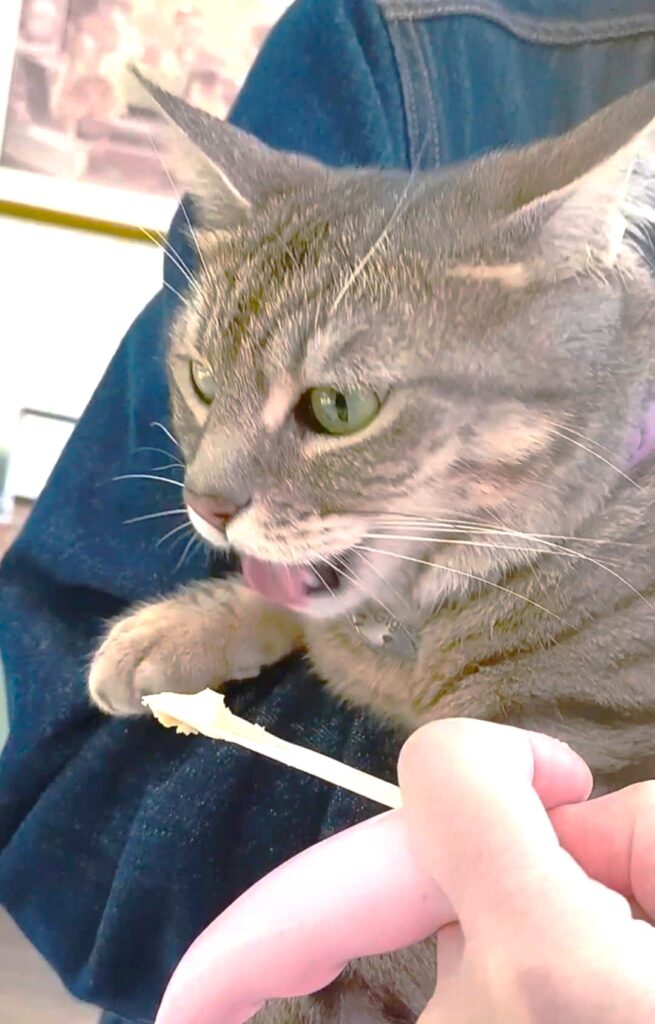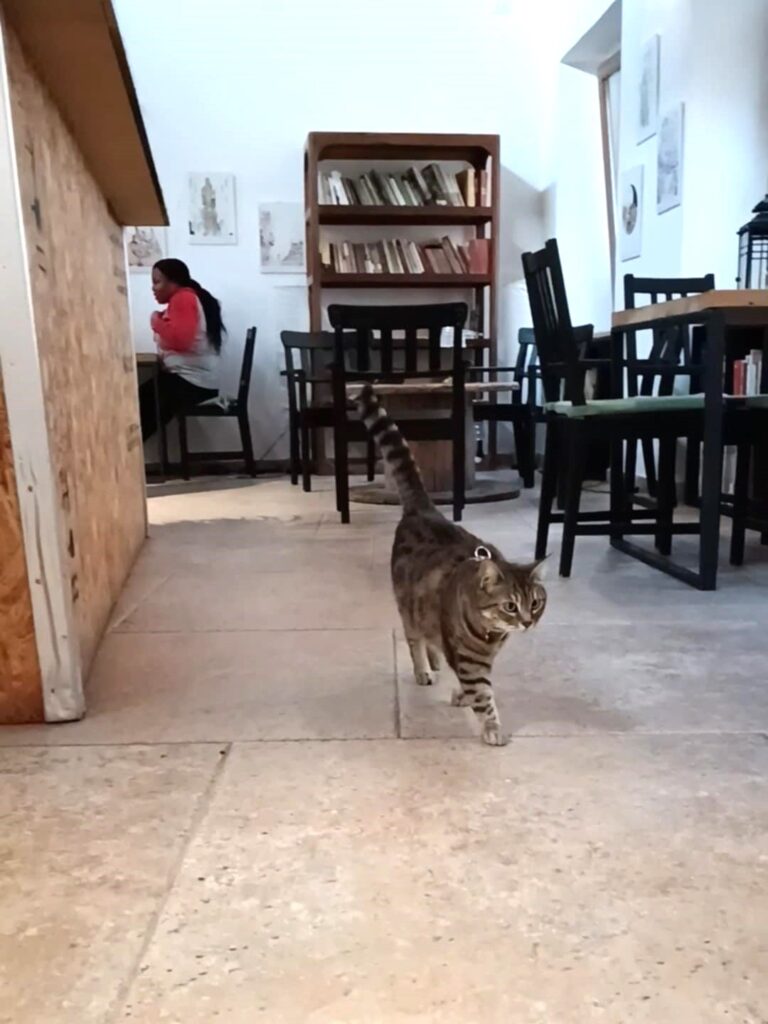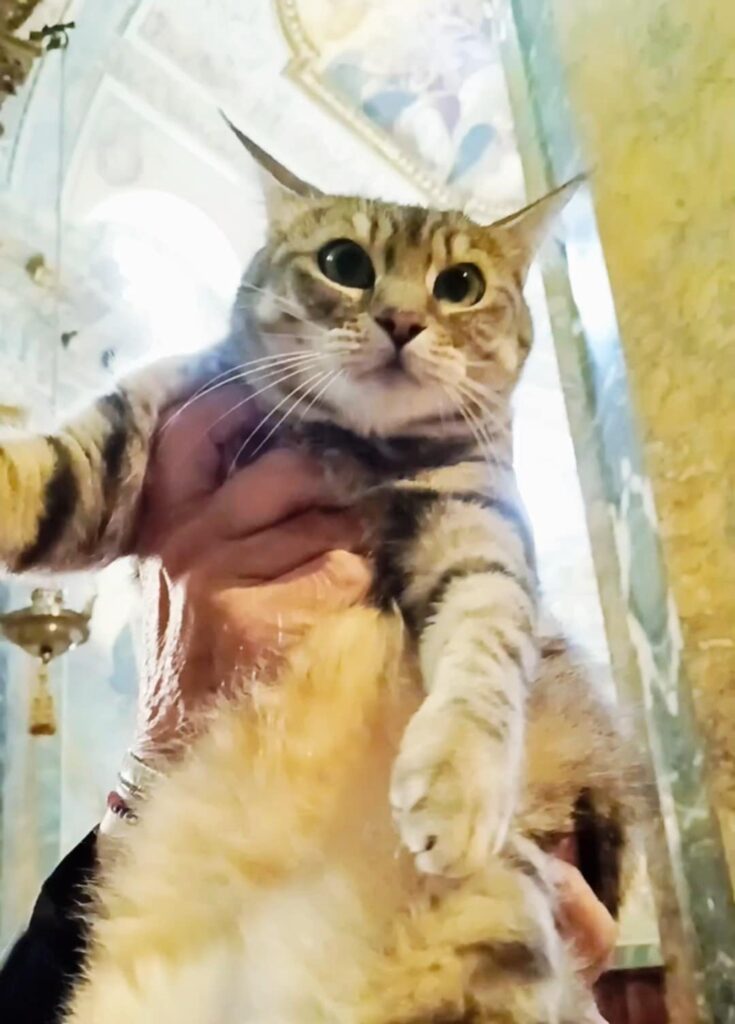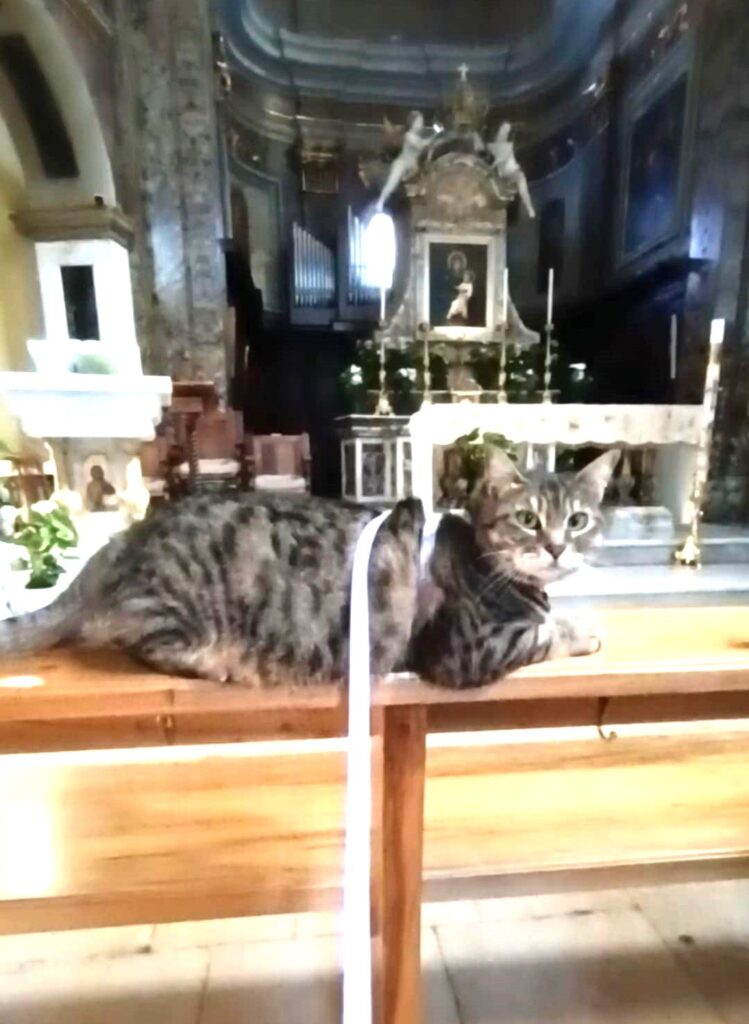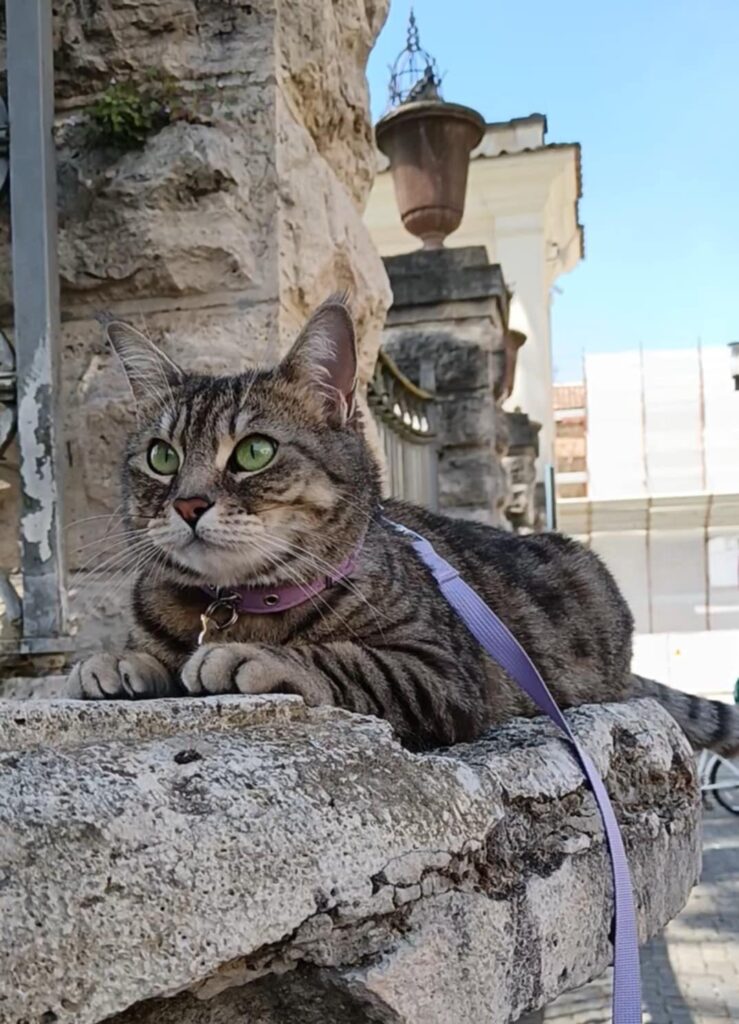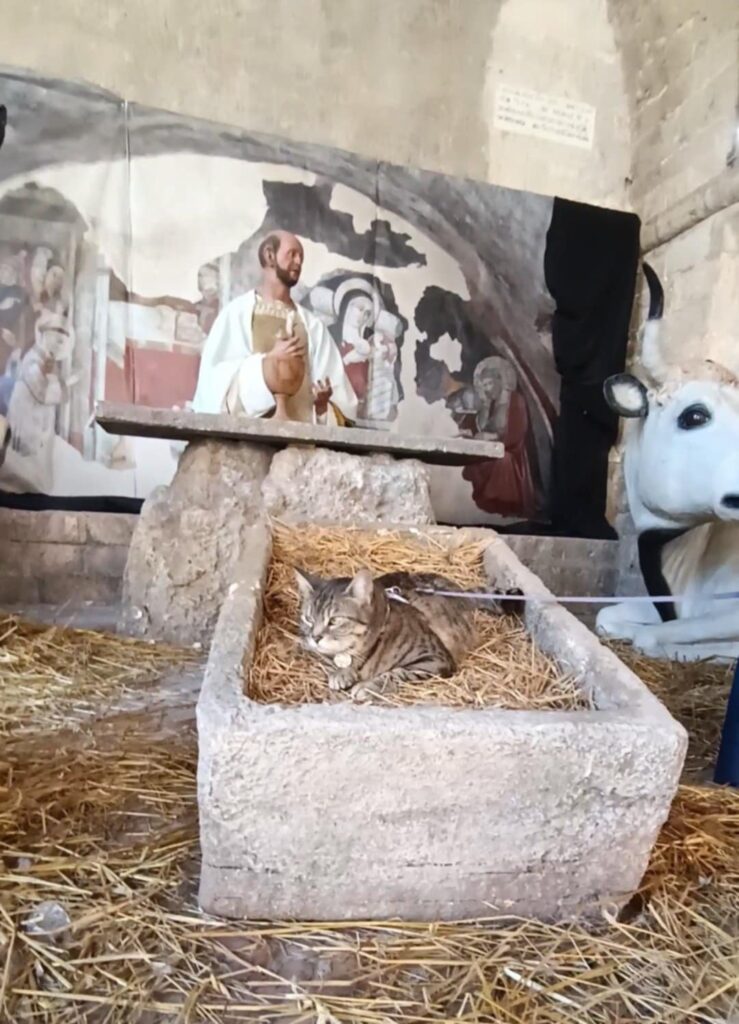Lazio, the heart of Italy, is so much more than just Rome. While the Eternal City steals the show, we decided to skip the crowds and uncover the region’s underrated delights. Scattered across the landscape are enchanting hilltop villages, many of which have stood since medieval times—or even earlier. These villages were strategically built on high ground for defence against invaders, sweeping views of approaching threats, and access to fresh water sources. Some even trace their roots back to the Etruscans, an ancient civilization with a knack for picking prime real estate (and, apparently, great Instagram-worthy backdrops).
From cobblestone alleys that zigzag like a cat chasing a laser pointer to sun-drenched squares that radiate warmth like a freshly baked focaccia, these villages are a living scrapbook of Italy’s rich history and enduring charm. Gigia, ever the intrepid explorer, made sure her paw-prints were left on every corner she investigated. She strutted through ancient archways like a tiny historian with a tail, surveyed the countryside like a miniature general, and even paused to admire the occasional sunbeam (because even a historical adventure needs a good snooze spot).
Rome may be the star of Lazio, but its off-the-radar villages prove that the region has plenty of tales to tell—especially when there’s a whiskered tour guide leading the way. Who needs the Colosseum when you’ve got a cat who can turn a medieval village into her personal fiefdom?
Celleno (VT)
Celleno (VT)
Known as the ‘Ghost Town,’ Celleno is a medieval village that was largely abandoned after an earthquake. Its crumbling stone houses and eerie atmosphere add a layer of mystery, as if the village itself is whispering tales of its past. Apart from the ubiquitous olive oil, the area is also known for its honey production, a sweet reminder of life persisting among the ruins.
Gigia, ever the adventurer, seemed right at home examining the ancient walls with the focus of a miniature Indiana Jones, as if she were uncovering secrets hidden for centuries. At one point, she even looked set to steal a fancy motorcycle on display in the village square, her eyes gleaming with mischief as if she were plotting her great escape. (Move over, Easy Rider—there’s a new rebel in town, and she’s got whiskers.)
But the highlight of her visit was the walk on the wooden rails outside the village, where the eerie yet calming surroundings seemed to captivate her completely. Celleno’s haunting beauty and timeless charm provided the perfect backdrop for Gigia’s antics, proving that even a ghost town can come alive with a curious feline explorer on the prowl.
Others
Civita di Bagnoregio (VT)
Civita Di Bagnoregio (VT)
Often called the ‘Dying Town,’ Civita di Bagnoregio is a stunning hilltop village accessible only by a pedestrian bridge. The town is famous for its breathtaking views and its slow erosion, which gives it a unique, otherworldly charm. My stomach did somersaults as Gigia strutted along the walls, peering down at the steep valley below with the fearless curiosity of a cat who’s clearly decided that gravity is just a suggestion.
At the heart of the village lies the Chiesa di San Donato, the main church of Civita di Bagnoregio. Located in the central square, it features a Romanesque facade with Renaissance elements, and inside, it houses a wooden crucifix attributed to the school of Donatello. The church has been a significant landmark in Civita for centuries, standing as a testament to the town's rich history and resilience. Gigia admired all of this from the comfort of the cool church floor, her tail flicking lazily as if she were a tiny art critic taking it all in—though she might have been more interested in the acoustics for her next meow performance. (Move over, Pavarotti—there’s a new diva in town.)
But the real surprise came when she somehow managed to secure us a table at a busy restaurant for lunch, proving that even in a crowded eatery, a determined cat can work miracles. Whether she charmed the maître d’ with her whiskers or simply stared them into submission, we’ll never know. Civita di Bagnoregio’s haunting beauty and timeless allure created an unforgettable setting for Gigia’s adventures, showing that even a 'dying town' can feel alive with a curious feline in charge.
Others
Rieti (RI)
Rieti
Officially recognized as Italy's geographical heart, Rieti has been a crossroads of civilization since ancient Sabine times. Its medieval center, encircled by 13th-century walls, tells stories of pilgrims and popes - but today's magic unfolds at places like Le Tre Porte, where literature and la dolce vita intertwine. We came for two reasons: to reunite with old friends, and for Gigia's book presentation in their atmospheric event space. The evening was quintessential Rieti - book lovers and cat enthusiasts sipping Cesanese wine beneath shelves of well-thumbed novels, while plates of divine polpette (reimagined with surprising local twists) made the rounds. Gigia, ever the gracious author-cat, indulged her fans - though her high-fives came with conditions. Approach too eagerly and she'd retreat; extend a patient hand, however, and she might deign to touch it with her velvet paw before returning to more important matters (namely, monitoring the polpette situation). This is Rieti's charm: a place where Roman bridges stand minutes from vibrant cultural hubs, where a cat's literary debut draws crowds as reliably as the town's annual festivals, and where every gathering - whether discussing books or simply sharing food - becomes a celebration of community.
Rome
Rome
Often called the ‘Dying Town,’ Civita di Bagnoregio is a stunning hilltop village accessible only by a pedestrian bridge. The town is famous for its breathtaking views and its slow erosion, which gives it a unique, otherworldly charm. My stomach did somersaults as Gigia strutted along the walls, peering down at the steep valley below with the fearless curiosity of a cat who’s clearly decided that gravity is just a suggestion.
At the heart of the village lies the Chiesa di San Donato, the main church of Civita di Bagnoregio. Located in the central square, it features a Romanesque facade with Renaissance elements, and inside, it houses a wooden crucifix attributed to the school of Donatello. The church has been a significant landmark in Civita for centuries, standing as a testament to the town's rich history and resilience. Gigia admired all of this from the comfort of the cool church floor, her tail flicking lazily as if she were a tiny art critic taking it all in—though she might have been more interested in the acoustics for her next meow performance. (Move over, Pavarotti—there’s a new diva in town.)
But the real surprise came when she somehow managed to secure us a table at a busy restaurant for lunch, proving that even in a crowded eatery, a determined cat can work miracles. Whether she charmed the maître d’ with her whiskers or simply stared them into submission, we’ll never know. Civita di Bagnoregio’s haunting beauty and timeless allure created an unforgettable setting for Gigia’s adventures, showing that even a 'dying town' can feel alive with a curious feline in charge.


